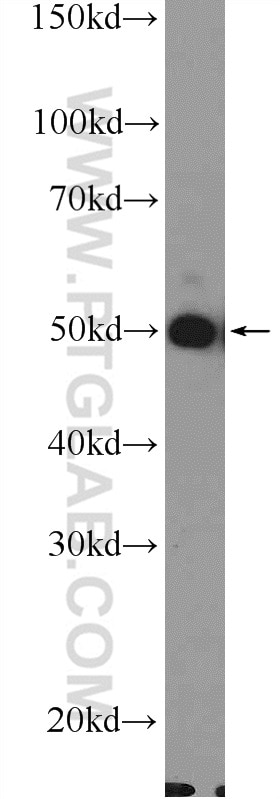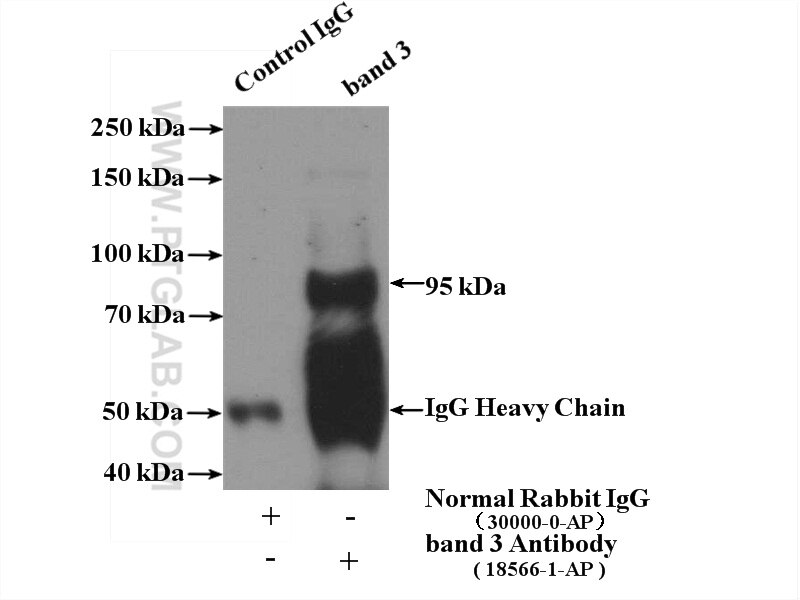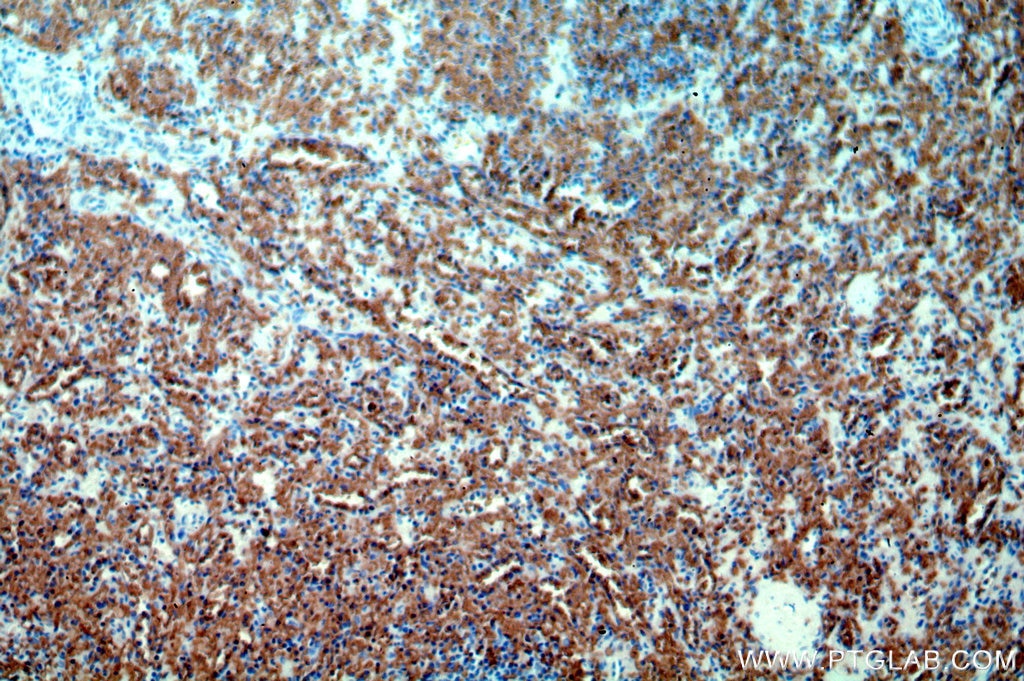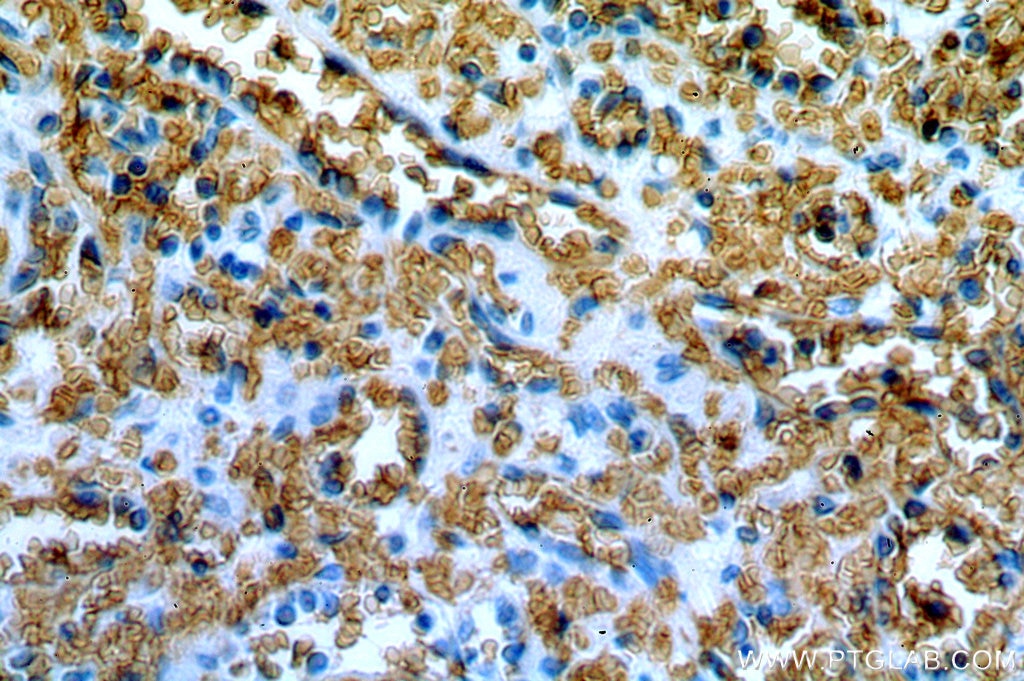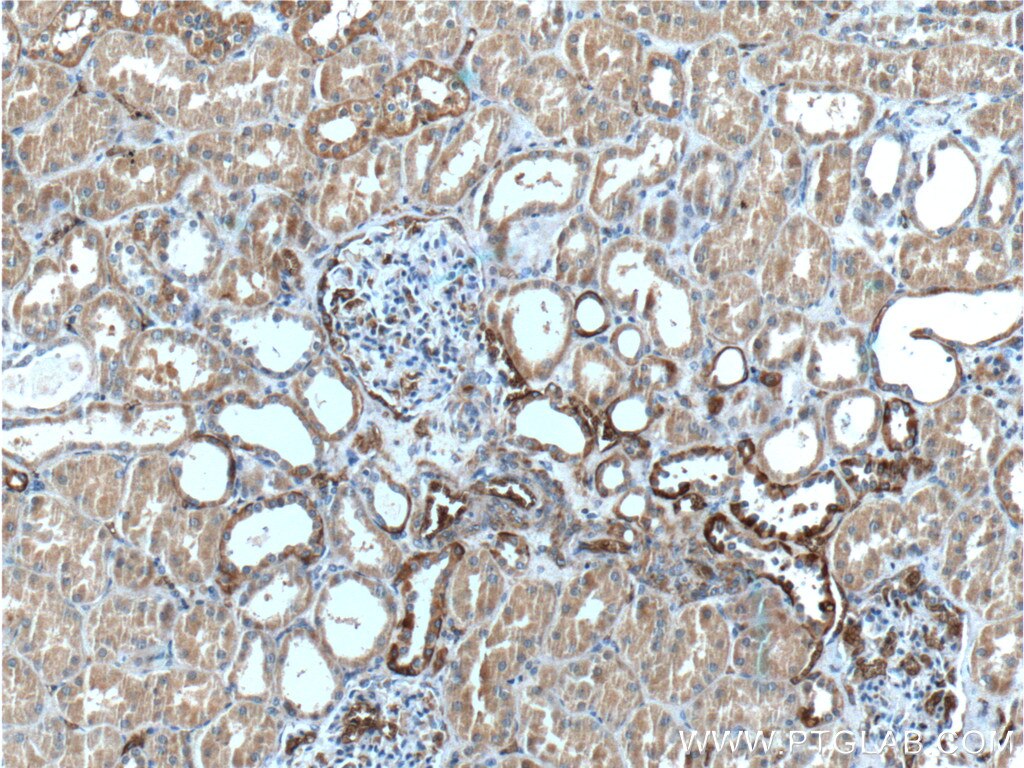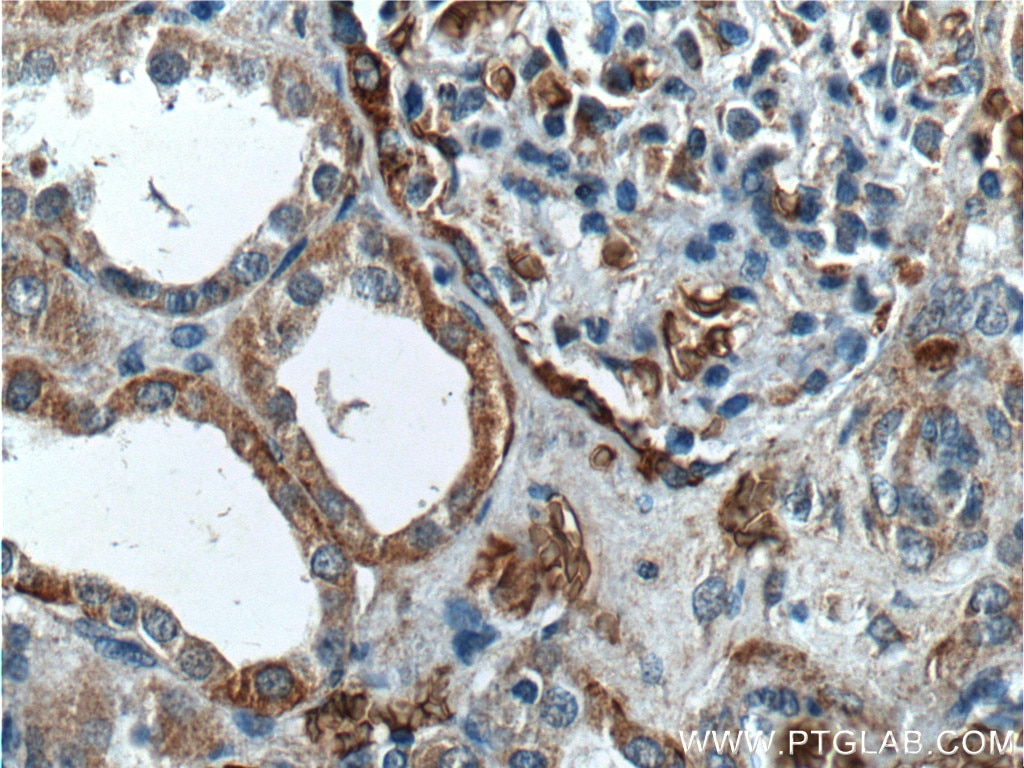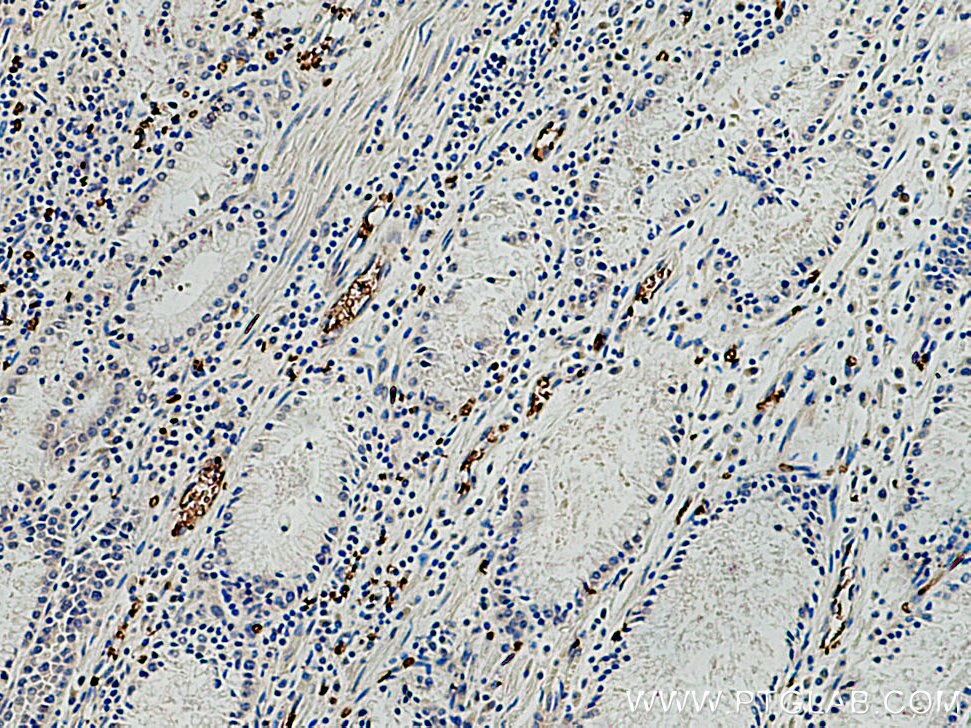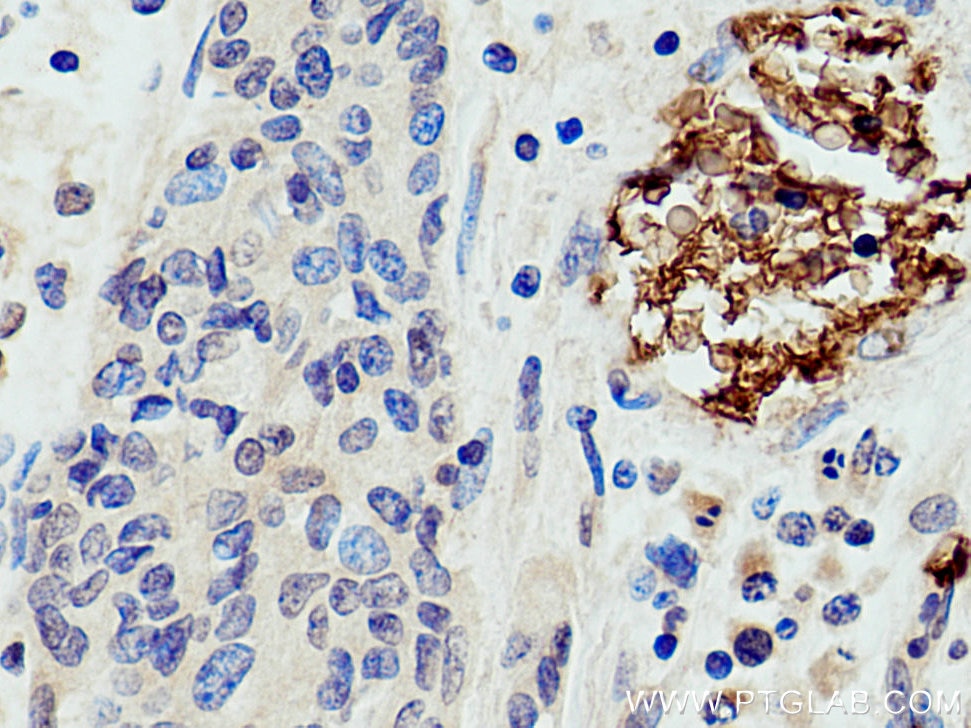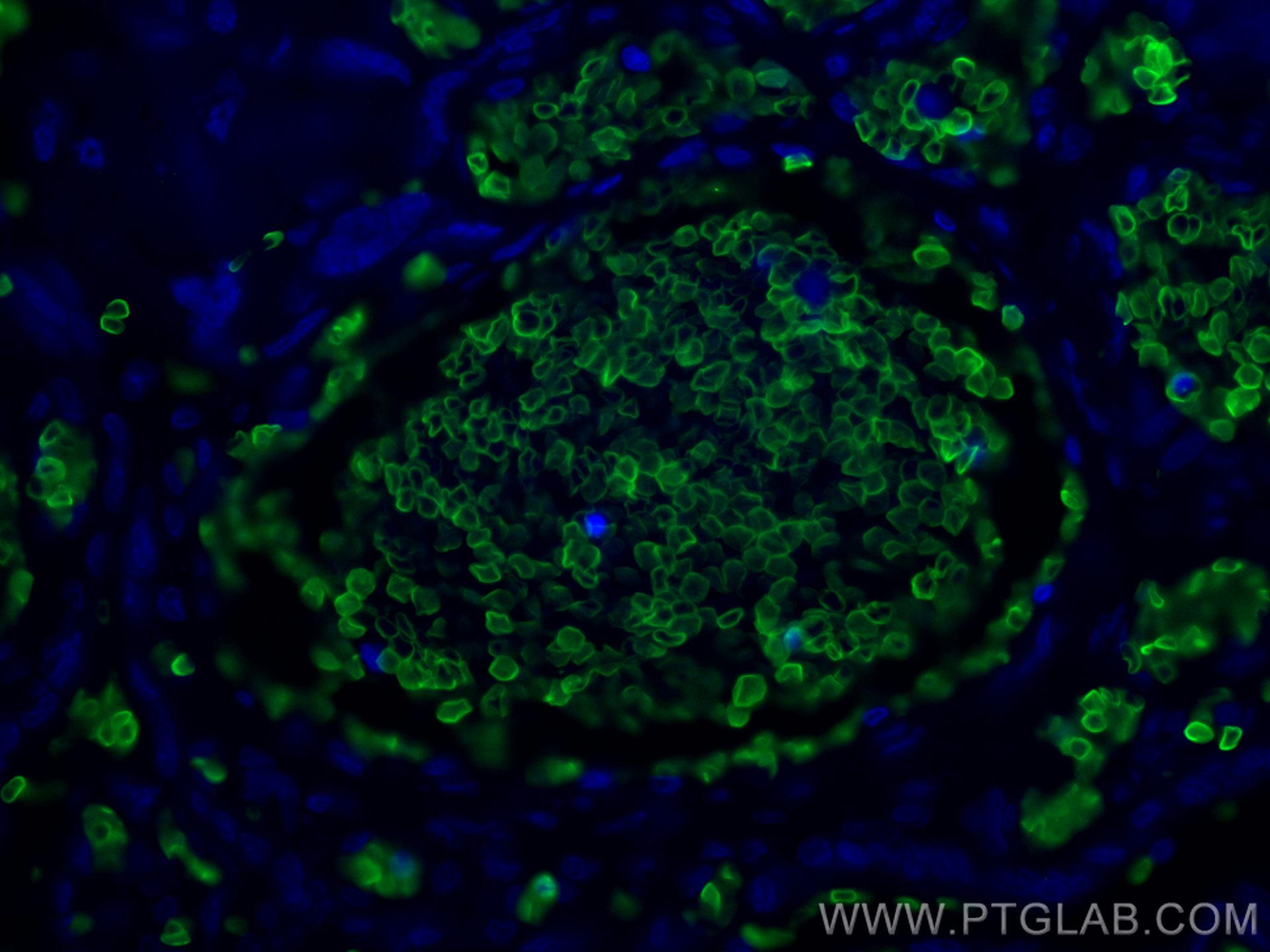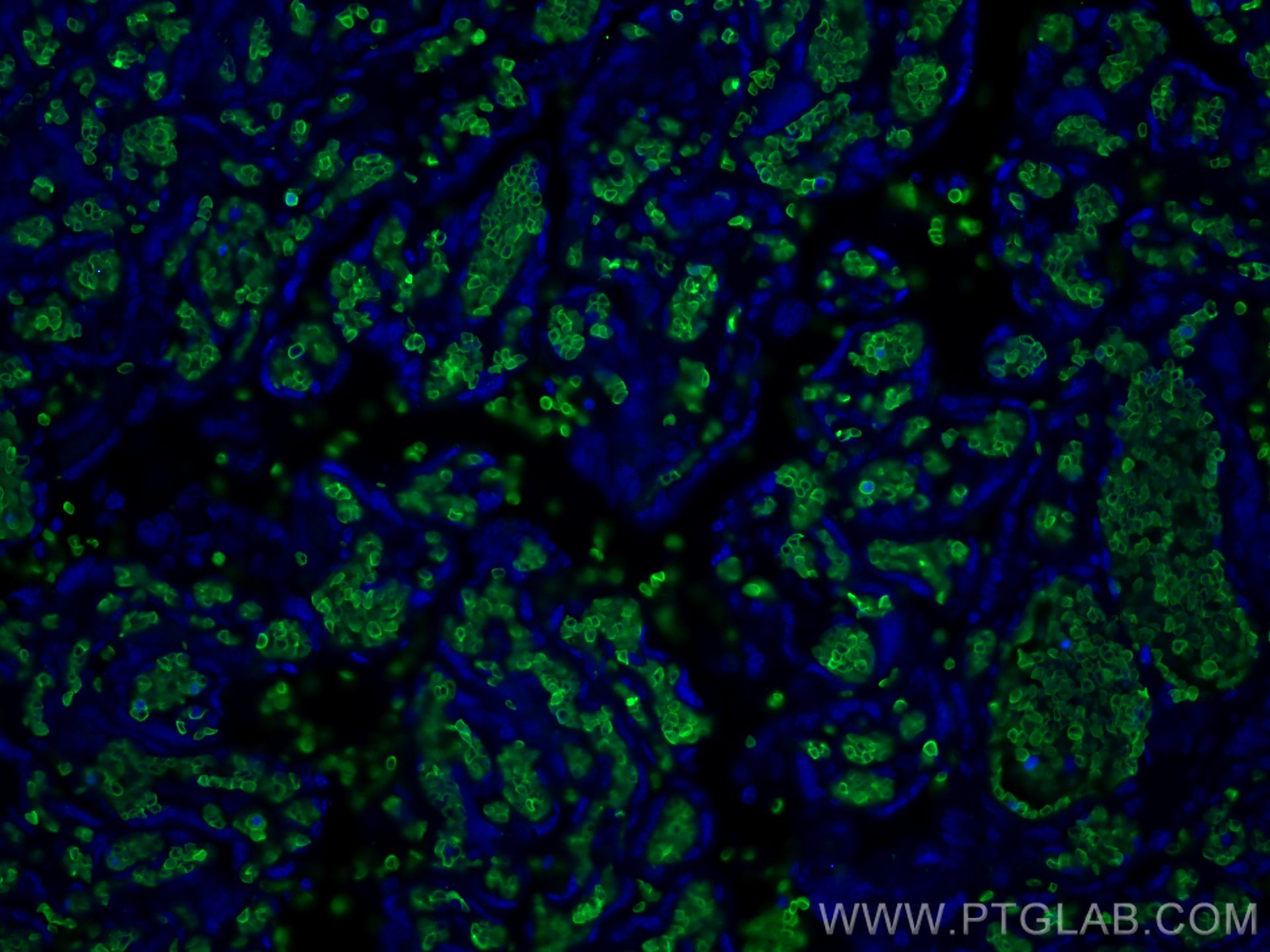Anticorps Polyclonal de lapin anti-Band 3/AE 1
Band 3/AE 1 Polyclonal Antibody for WB, IHC, IF-P, IP, ELISA
Hôte / Isotype
Lapin / IgG
Réactivité testée
Humain, rat, souris et plus (1)
Applications
WB, IHC, IF-P, IP, ELISA
Conjugaison
Non conjugué
N° de cat : 18566-1-AP
Synonymes
Galerie de données de validation
Applications testées
| Résultats positifs en WB | cellules HepG2 |
| Résultats positifs en IP | tissu hépatique de souris |
| Résultats positifs en IHC | tissu splénique humain, tissu de cancer de l'estomac humain, tissu rénal humain il est suggéré de démasquer l'antigène avec un tampon de TE buffer pH 9.0; (*) À défaut, 'le démasquage de l'antigène peut être 'effectué avec un tampon citrate pH 6,0. |
| Résultats positifs en IF-P | tissu placentaire humain, |
Dilution recommandée
| Application | Dilution |
|---|---|
| Western Blot (WB) | WB : 1:200-1:1000 |
| Immunoprécipitation (IP) | IP : 0.5-4.0 ug for 1.0-3.0 mg of total protein lysate |
| Immunohistochimie (IHC) | IHC : 1:20-1:200 |
| Immunofluorescence (IF)-P | IF-P : 1:50-1:500 |
| It is recommended that this reagent should be titrated in each testing system to obtain optimal results. | |
| Sample-dependent, check data in validation data gallery | |
Applications publiées
| WB | See 4 publications below |
| IHC | See 2 publications below |
| IF | See 1 publications below |
Informations sur le produit
18566-1-AP cible Band 3/AE 1 dans les applications de WB, IHC, IF-P, IP, ELISA et montre une réactivité avec des échantillons Humain, rat, souris
| Réactivité | Humain, rat, souris |
| Réactivité citée | rat, Humain, souris, Plasmodium falciparum |
| Hôte / Isotype | Lapin / IgG |
| Clonalité | Polyclonal |
| Type | Anticorps |
| Immunogène | Band 3/AE 1 Protéine recombinante Ag13076 |
| Nom complet | solute carrier family 4, anion exchanger, member 1 (erythrocyte membrane protein band 3, Diego blood group) |
| Masse moléculaire calculée | 911 aa, 102 kDa |
| Poids moléculaire observé | 95 kDa, 50 kDa |
| Numéro d’acquisition GenBank | BC101570 |
| Symbole du gène | band 3 |
| Identification du gène (NCBI) | 6521 |
| Conjugaison | Non conjugué |
| Forme | Liquide |
| Méthode de purification | Purification par affinité contre l'antigène |
| Tampon de stockage | PBS with 0.02% sodium azide and 50% glycerol |
| Conditions de stockage | Stocker à -20°C. Stable pendant un an après l'expédition. L'aliquotage n'est pas nécessaire pour le stockage à -20oC Les 20ul contiennent 0,1% de BSA. |
Informations générales
Anion exchanger 1 (AE1), also known as band 3, is a 95-100 kDa transmembrane glycoprotein which is abundantly expressed in erythrocyte plasma membrane and mediates the electroneutral exchange of Cl- and HCO3-. It contains a 52-55 kDa C-terminal membrane crossing domain and a 43 kDa N-terminal cytoplasmic domain. Degradation of band 3 protein occurred during erythrocyte aging. The oxidative stress can also activate the proteolysis of band 3 through caspases. This antibody is expected to recognize the intact band 3 (95-100 kDa) and various degradation products (38-60 kDa). (PMID: 22890269, 29240292, 28130418)
Protocole
| Product Specific Protocols | |
|---|---|
| WB protocol for Band 3/AE 1 antibody 18566-1-AP | Download protocol |
| IHC protocol for Band 3/AE 1 antibody 18566-1-AP | Download protocol |
| IF protocol for Band 3/AE 1 antibody 18566-1-AP | Download protocol |
| IP protocol for Band 3/AE 1 antibody 18566-1-AP | Download protocol |
| Standard Protocols | |
|---|---|
| Click here to view our Standard Protocols |
Publications
| Species | Application | Title |
|---|---|---|
Blood Ferroportin deficiency in erythroid cells causes serum iron deficiency and promotes hemolysis due to oxidative stress. | ||
Sci Adv Red blood cell-derived nanoerythrosome for antigen delivery with enhanced cancer immunotherapy. | ||
J Proteome Res Proximity Proteomics Has Potential for Extracellular Vesicle Identification. | ||
Stem Cells Int Pyridoxal-5'-Phosphate Promotes Immunomodulatory Function of Adipose-Derived Mesenchymal Stem Cells through Indoleamine 2,3-Dioxygenase-1 and TLR4/NF-κB Pathway. | ||
PLoS One Mechanisms that determine the internal environment of the developing brain: a transcriptomic, functional and ultrastructural approach. | ||
Front Neurosci Influx mechanisms in the embryonic and adult rat choroid plexus: a transcriptome study. |
